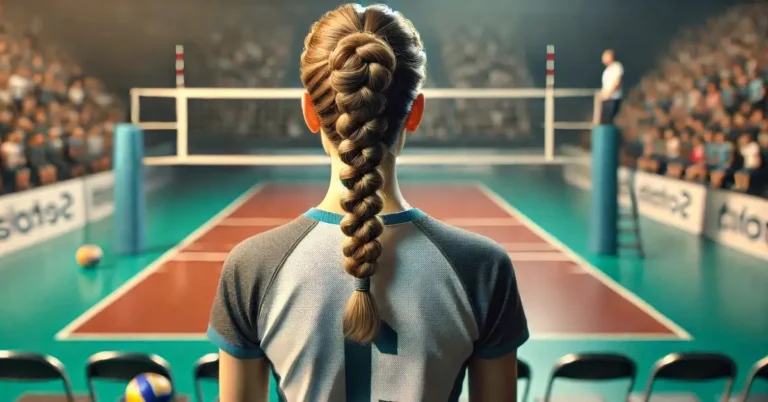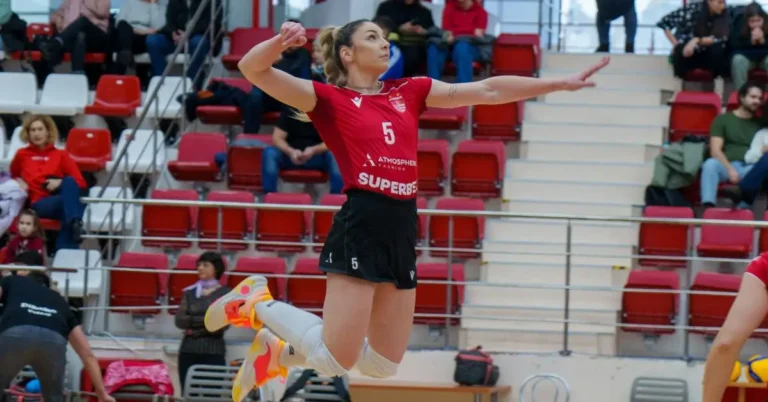New to the sport and wondering How to Play Volleyball for Beginners? My friendly guide covers everything you need to know to get started and enjoy the game.
How to Play Volleyball for Beginners?

Core Volleyball Skills and Techniques
When I first learned How to Play Volleyball for Beginners twelve years ago, I quickly realized that mastering a few core skills can dramatically improve my game. From serving to attacking and defending, each technique plays a pivotal role in ensuring success on the court. Here’s a closer look at the essential skills you’ll need to grow as a player.
Serving: Starting the Game
Serving is where every volleyball match begins. It’s the critical first touch that can set the tone for an entire rally.
I learned three popular types of serves: the underhand serve, overhand serve and the float serve. The overhand serve offers strength and precision, while the float serve can confuse opponents with its unpredictable trajectory. Learning a good serve not only puts pressure on the receiving team but also creates scoring opportunities right off the bat.
For You as a beginner I would reccomend the underhand serve. It´s the easiest one to learn and gives you the most control to start the game.
Passing: The Key to Setting Up Plays
Passing is vital for transitioning from defense to attack. It’s all about receiving the ball cleanly and setting up the next play.
As a passer, I typically use two techniques: bumping and setting. Bumping, or forearm passing, is the most used method for digging the ball off the floor or receiving a serve. Setting involves using my fingers to position the ball for a teammate. Mastering passing not only improves my placement but also enhances the team’s chances of executing successful plays.
Setting: The Art of the Assist
Setting is often viewed as the playmaker’s role in volleyball. As a setter, I focus on delivering accurate, well-timed balls to the attackers.
Good sets need to be high enough for spiking, allowing my teammates—like the outside hitter or opposite hitter—to execute effective attacks. I keep an eye on the blockers and adjust my sets based on their positioning. My primary goal is to create opportunities while minimizing errors.
Attack Strategies: Spiking and Blocking
Attacking is where I can really showcase my skills. The primary attack in volleyball is the spike, a powerful hit aimed at scoring points.
During my training, I concentrate on timing and approach when spiking. A well-executed spike utilizes athleticism and technique to strike the ball at its peak height.
Equally Blocking is essential, as it prevents the opposing team from scoring. The middle blocker plays a vital role here, timing jumps to intercept spikes effectively. To succeed, teamwork is key, as the entire unit must adjust their movements and strategies based on the opponent’s play.
Practical Tips on How to Play Volleyball for Beginners
Getting started with volleyball can be exciting and a bit overwhelming. I’ve gathered my experiences and key points to help you How to Play Volleyball for Beginners, avoid common mistakes, and develop your volleyball intelligence. These insights will set you on the right path to enjoying the game while improving your skills.
Positional Play and Team Coordination
Understanding where I need to be on the court is crucial. Each position has unique responsibilities. For example, defenders should anticipate the opponent’s moves to execute a successful dig or pass.
Teamwork is essential. I always call out “mine” confidently, ensuring teammates know I’m taking the ball. This reduces confusion and maximizes our chances of success. Therefore communication is very important on the court.
During a game, it helps to stay aware of my teammates’ positions. If I notice an open area, I can signal for a play that utilizes that space. Remember, every player contributes to the team’s flow, so maintaining communication is vital.
Common Mistakes and How to Avoid Them
In my early days, I often struggled with simple foot faults while serving. I learned that keeping my feet behind the service line can prevent unnecessary errors. Also, staying focused on the serve’s target helps a lot.
Another common error is failing to track the ball. I always remind myself to keep my eyes on the ball until I make contact, reducing mis-hits.
Developing Your Volleyball IQ
Building my volleyball IQ has been invaluable. It starts with understanding the rules, like how to score—reaching 25 points with a two-point lead.
Watching matches helped me recognize strategic plays. For instance, I learned how an ace can shift momentum. It’s also important to identify out-of-bounds areas to avoid mistakes during a game.
Focusing on formations and rotations, makes me a more effective teammate. By analyzing game scenarios—from serves to defensive setups—I continuously improve my decision-making skills on the court.
The Volleyball Court Layout
The volleyball court is a rectangular area divided by a net, measuring 18 meters long and 9 meters wide. Each side has a 3-meter attack line, which marks how far back players can hit the ball for an attack.
The court is typically divided into a front court and a back court, where:
- The front court is where hitters attack and block.
- The back court is designated for defense and serving.
In indoor volleyball, there are additional markings, including service areas and a coaching zone. For beach volleyball, the court is slightly smaller, accommodating two players per team.
Essential Equipment and Player Positions

Essential equipment includes a regulation volleyball and a net that stands 2.43 meters high for men and 2.24 meters for women. Each team consists of six players on the court, who occupy three front row positions and three back row positions.
Common positions include:
- Outside hitter
- Setter
- Middle blocker
- Opposite hitter
- Libero
Understanding these roles is crucial for team dynamics and strategy. Each player must learn their specific responsibilities and how they contribute to the overall gameplay.
Objective and Scoring System
The objective of volleyball is to score points by hitting the ball over the net and into the opponent’s court. A match is typically played best out of five sets. Teams must reach 25 points to win a set, and they need a margin of two points to secure the victory. The fifth set also called tie-break and is only played to 15 points
The scoring system follows rally scoring, meaning a point is awarded on every serve, regardless of which team served. This fast-paced nature keeps the game exciting and competitive, allowing teams equal opportunity to score.
Rules of the Game
In volleyball, teams can hit the ball up to three times before sending it over the net. These hits usually consist of a pass, a set, and a spike. Players cannot hold or carry the ball, a violation that results in a loss of the rally. And a single player cannot touch the ball two times in a row.
Teams must also adhere to the rotation rule, where players must rotate positions after winning a serve. This rule ensures each player participates in both offensive and defensive plays. Knowing the rules can enhance gameplay enjoyment and promote fair competition.
FAQ: How to Play Volleyball for Beginners

How to start playing volleyball as a beginner?
Begin by learning the basic skills. Join a local club or community team for practice. Watching games can help you understand strategies. Most importantly, have fun and enjoy the process!
What are the 5 basic steps in volleyball?
The five basic steps are: 1) Serve, 2) Pass, 3) Set, 4) Attack (hit), and 5) Block. Mastering these skills will build a solid foundation for your gameplay.
Is volleyball hard for beginners?
Volleyball can be challenging for beginners due to its fast pace and technical skills. However, with practice and guidance, most people can learn the basics quickly and enjoy the game.
What age is too late to start volleyball?
It’s never too late to start playing volleyball! Many players begin in their teens or even later. Adult leagues and recreational teams are widely available, making it accessible for all ages.
If you liked this blog post about the topic: How to Play Volleyball for Beginners, don’t forget to leave us a comment down below to tell us about your experience and if you already started to play.
I also have a beginners guide on How to Play Beach Volleyball. Check it out!






